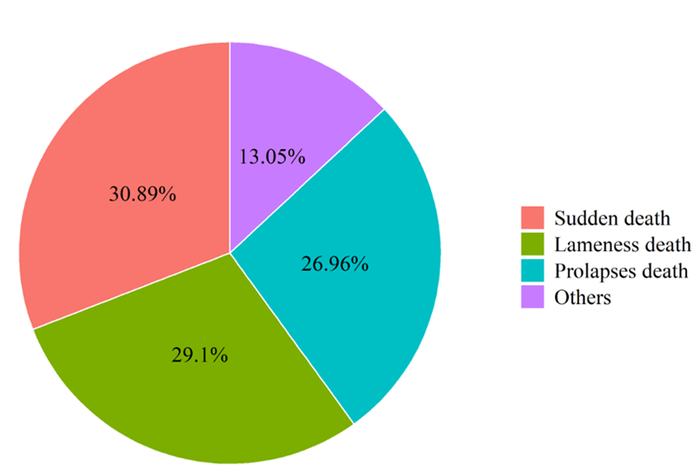Sow mortality: What are the main risk factors?
Study demonstrated that disease status of the breeding herds, barn characteristics and whole-herd feed medication were associated with the sow mortality rate.
November 1, 2022

Sow mortality has been a growing concern over the past decade in different countries and it has been increasing on many swine farms and production systems. Sow mortality can increase economic losses due to factors such as replacement rate, affecting negatively employee morale and compromising animal welfare (Deen and Xue, 1999; Kikuti et al., 2021; Kirk et al., 2005). The causes of sow mortality can be associated with infectious and non-infectious factors, including factors related to infectious diseases, management practices, nutrition and the environment (Chagnon et al., 1991).
To better understand the relationship and interactive dynamic between production performance and factors that may impact sow mortality a multifactorial investigation of the risk factors is required. Observational studies can be a powerful tool to help the identification and assessment of risk factors that can be used to develop hypotheses for intervention studies. In addition, these studies can be used to analyze complex datasets with multiple information. A recent retrospective observational study to assess the risk factors associated with weekly sow mortality rate from one large swine production system located in the Midwestern United States during 2019-2021 found the following risk factors associated with higher sow mortality rate:
Breeding herds facing porcine reproductive and respiratory syndrome virus outbreaks (epidemic)
PRRSV epidemic herds and positive for Mycoplasma hyopneumoniae
PRRSV outbreaks with no feed meds added
Breeding herds with open gestation compared with stalls
Younger herds
The figure below shows the main causes of sow mortality in this study, followed by sudden deaths (30.89%), lame deaths (29.10%), prolapses (26.96%) and other causes (13.05%), respectively.

This study demonstrated that the disease status of the breeding herds, barn characteristics and whole-herd feed medication were associated with the sow mortality rate. Breeding herds epidemic for PRRSV were associated with higher sow mortality. Moreover, the interaction of two diseases (Mycoplasma hyopneumoniae positive herds and epidemic for PRRSV) showed higher sow mortality compared to farms with single disease status. This study also documented the negative impact of the gestation type on sow mortality and showed that whole-herd medication can reduce sow mortality. Sow mortality is a critical issue in the swine industry and the ongoing identification of risk factors are key to guiding producers and veterinarians in their decision-making process to establish proper interventions to reduce sow mortality.
More details about this study are available here: Risk factors associated with sow mortality under the condition of a production system in the Midwestern United States during 2019-2021. If there is any question, please contact us at [email protected]; or [email protected].
References
Chagnon, M., D’Allaire, S., Drolet, R., 1991. A prospective study of sow mortality in breeding herds. Can J Vet Res 55, 180–184.
Deen, John, and Jinliang Xue. 1999. “Sow Mortality in the US: An Industry-Wide Perspective.” In . http://conservancy.umn.edu/handle/11299/148140.
Kikuti, M., Deen, J., Pinilla, J.C., Corzo, C.A., 2021. Understanding Sow Mortality: Part 1. College of Veterinary Medicine, University of Minnesota.
Kirk, R.K., Svensmark, B., Ellegaard, L.P., Jensen, H.E., 2005. Locomotive Disorders Associated with Sow Mortality in Danish Pig Herds. J Vet Med Series A 52, 423–428. https://doi.org/10.1111/j.1439-0442.2005.00747.x
Source: Rodrigo Paiva, Christopher Rademacher, Daniel Linhares, Gustavo Silva and Cesar Moura, who are solely responsible for the information provided, and wholly owns the information. Informa Business Media and all its subsidiaries are not responsible for any of the content contained in this information asset.
You May Also Like



